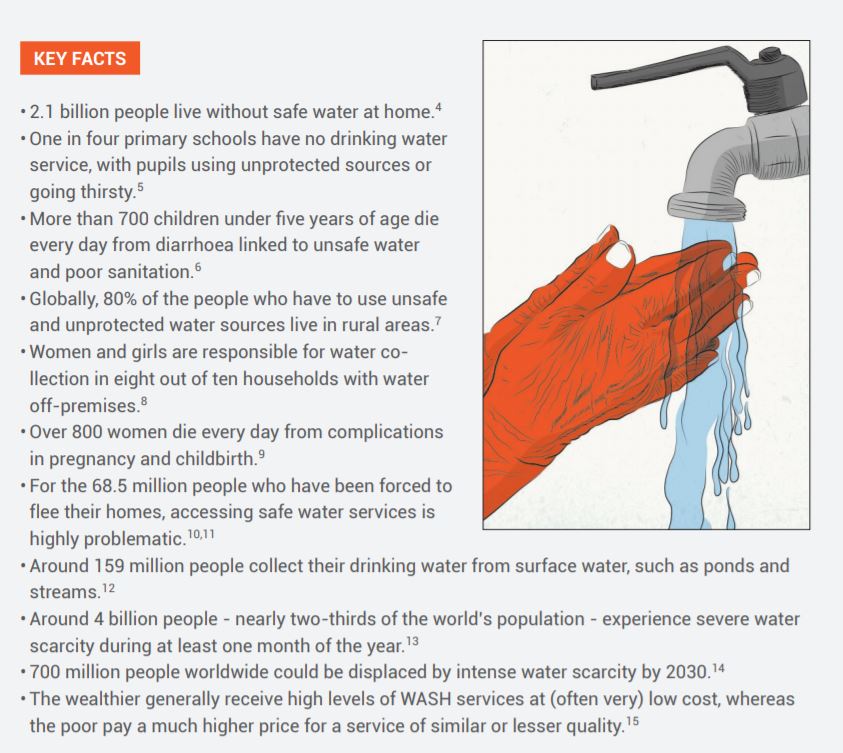World Water Day 2019: Leaving no one behind
World Water Day shines a light on those people who are missing the human right to safe water and sanitation. This year, with the main theme being “Leaving no one behind” it is focusing on the goal of providing water for all by 2030. It is also tackling the water crisis by addressing the reasons of so many people being left behind.
Water as a human right
In 2010, the United Nations General Assembly explicitly recognized the human right to water and sanitation and acknowledged that clean drinking water and sanitation are essential to the realisation of all human rights. Yet we still live in the world in which many are deprived of that right.
Water crisis in numbers
Download the full World Water Day 2019 Factsheet
What can be done?
Civil society organizations should work to keep governments accountable, invest in water research and development, and promote the inclusion of women, youth and indigenous communities in water resources governance.
Generating awareness of these roles and turning them into action will lead to win-win results and increased sustainability and integrity for both human and ecological systems.
Download the full educational pdf Clean water and sanitation: why it matters?
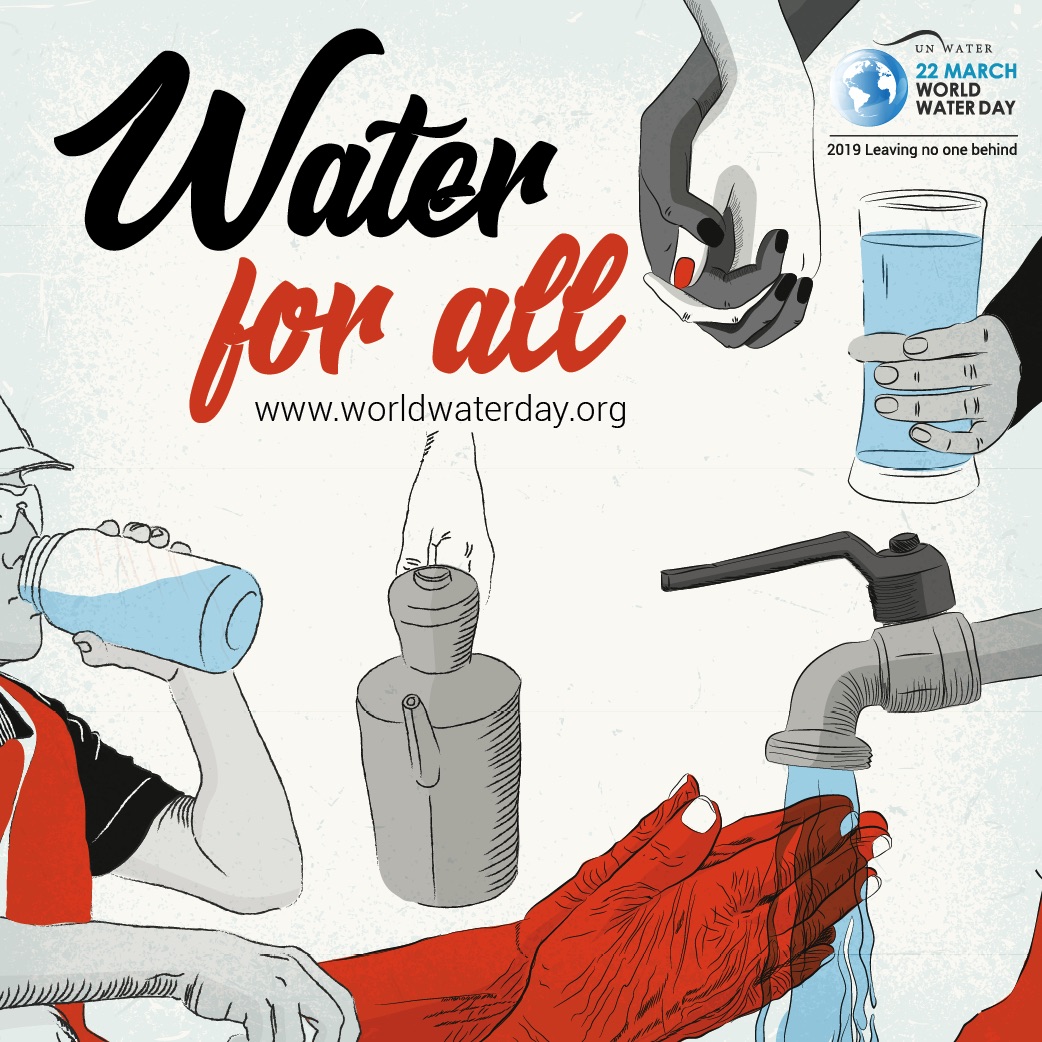
WWD
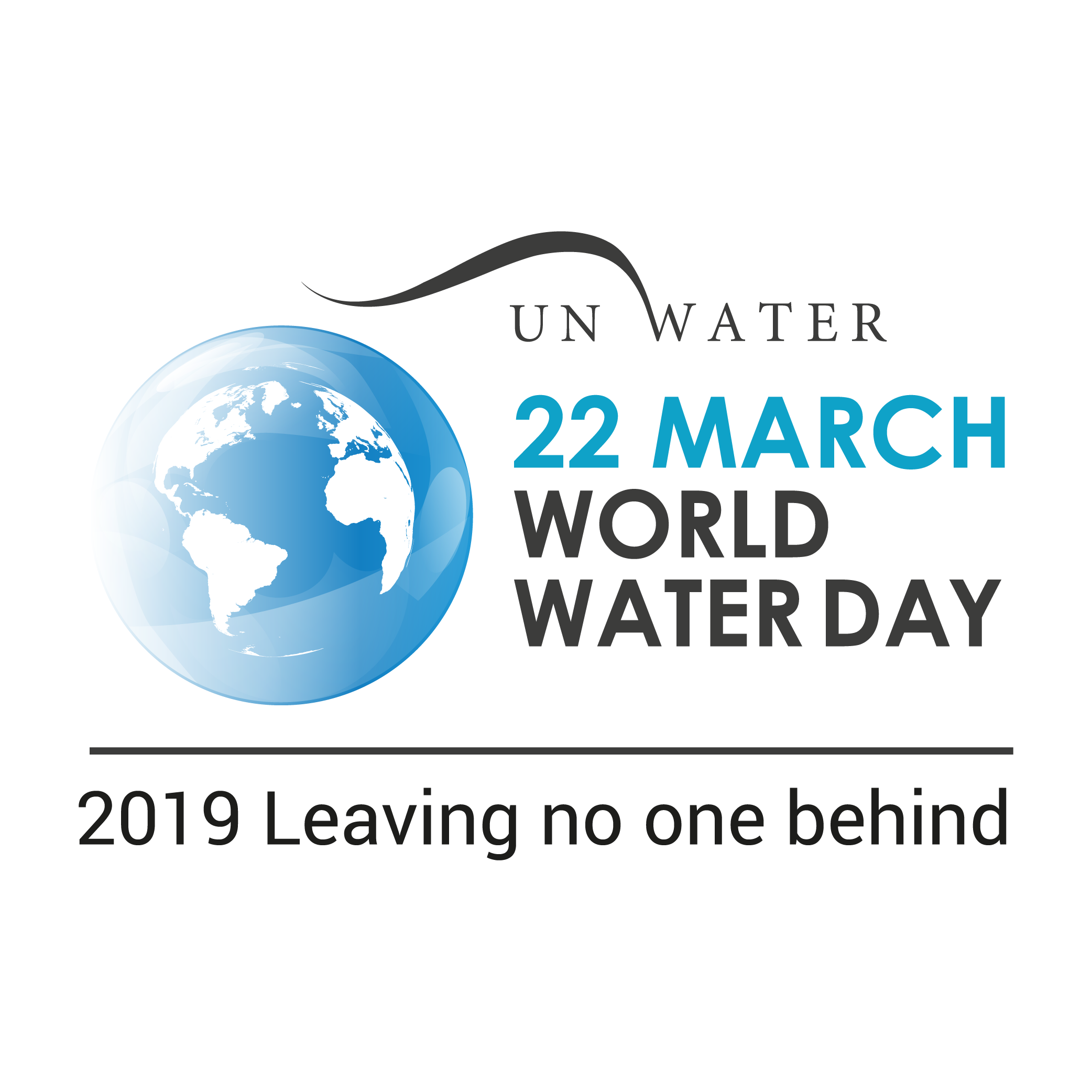
WWD
ECOLOGICAL RESTORATION FOR ECOLOGICAL AND HUMAN HEALTH
Sierra de Guadarrama National Park (Spain) © Zerrin Karaarslan
Every year, the Alfred Toepfer Natural Heritage Scholarships (ATS) supports the work of young conservationist in protected areas across Europe. Zerrin Karaarslan is one of the winners of the ATS 2017 and is a Landscape Architect working for Ministry of Forestry and Water Affairs General Directorate of Nature Conservation and National Parks, Turkey. She is also Ph.D. Candidate in Ankara University Graduate School of Natural and Applied Sciences. As a technical staff working for the ministry, she will offer her gained experience to the restoration of degraded ecosystems in Turkey and enable the conservation of one of the richest biodiversity value of the region.
Registrations are now open! Open Call for 2019
The call is open to all young professionals working in topics related to Protected Areas in Europe. Conditions to apply:
- candidates must be under 35
- have a European nationality
- be employed by a Protected Area or nature conservation organisation
Applications for study visits to prepare master or doctoral thesis will not be considered.
The deadline is the 3rd of May 2019.
Find more information and REGISTER HERE!
Article issued by Zerrin KARAARSLAN
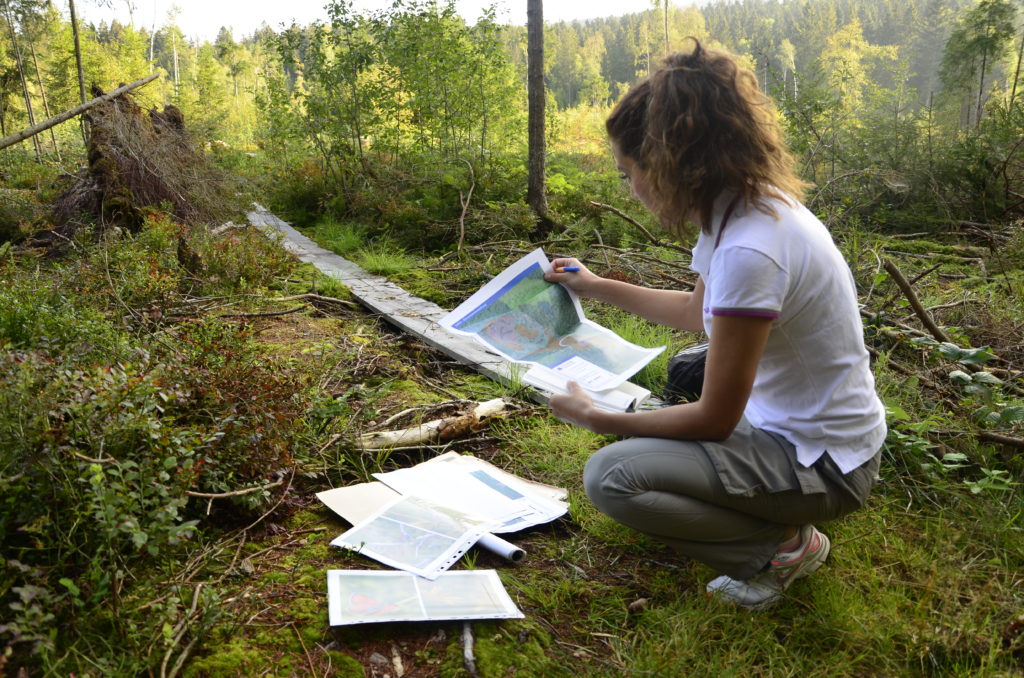
Current researches highlight a two-way relationship between restoration and health concept.
Firstly, “restoration enables recovery of a healthy eco-system through ecosystem management”.
Secondly, there are also very close linkages between human health and ecological health.
Thus, “a healthy ecosystem is one that provides the ecosystem services supportive of the human communities’ health” and wellbeing
In this context the purposes of study visits were;
- To see the best practices of ecological restoration in a protected area and understand the philosophy of the ecological restoration approach at European protected areas
- To learn and evaluate the benefits of ecological restoration on protected areas as a means of ecosystem health and human health,
- To offer gained experience as an intention for the restoration of degraded ecosystems in Turkey.
For evaluating effects of restoration on different ecosystems study visits were conducted at selected protected areas;
- Doñana National Park (Spain) – for wetland restoration,
- Sierra de Guadarrama National Park (Spain) – for scrub and natural grassland formation habitats restoration
- Bayerischer Wald National Park (Germany) – for recovery of the natural forest ecosystem through assisted natural regeneration.
As a means of an ecosystem, health key indicators (like the composition of flora and fauna; species diversity, biomass; primary production; the proportion of exotic species etc.) for different kinds of ecosystems are specified.
Effects of restoration on these indicators are specified according to the face to face meeting and field studies with national park managers during a week-long study visits at each NP.
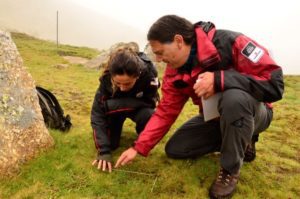
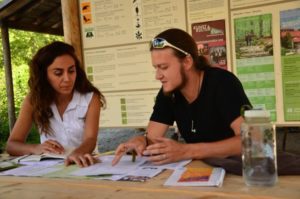
Field studies with national park experts at Bayerischer Wald National Park (Germany) and Sierra de Guadarrama National Park (Spain) © Zerrin Karaarslan
Also questionnaires were applied with the visitor for specifying effects of restoration on human health.
Visitor questionnaires were configured to evaluate the effects of protected areas social, psychological and physical health and welfare.
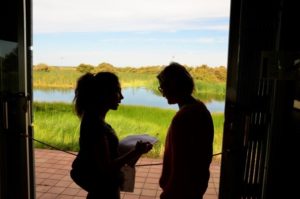
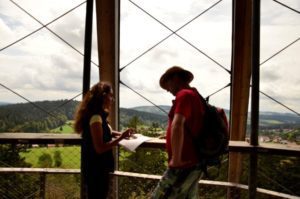
Questionnaires with visitors at Doñana National Park (Spain) and Bayerischer Wald National Park (Germany) © Zerrin Karaarslan
Main findings of the study;
Indicators for ecosystem health change according to ecosystem types. Thus restoration efforts in protected areas have different effects on ecosystem health at different ecosystem types. However, a common point for all ecosystem types is that ecosystem health in protected areas gets better with restoration efforts.
For example, endangered species returned to nest in NP Doñana National Park with wetland restoration efforts. Also, the number of alien species decreased while vegetation cover in NP increased thanks to restoration efforts.
Nardus stricta cover around the lake boosted, natural grassland natural regeneration improved and vegetation cover increased, erosion and eutrophication reduced, number of amphibians improved in Sierra de Guadarrama National Park thanks to scrub and natural grassland formation habitats restoration.
Development of regeneration density of trees and height composition in the forest regeneration increased in Bayerischer Wald National Park by “let nature be nature” approach. Also, the distribution of regeneration density in sample plots developed and biodiversity increased. Moreover drinking water quality and the amount of water in catchment also increased.
There are also plenty of healthy opportunities for visitors in restored protected areas like trails, cycling routes, visitor centers, observation points for fauna and flora. Visitors get the highest protected area experience at these recreational areas. Lastly, the evaluation of visitor surveys consistently documented positive links between human contact with nature and health and well-being. Hence by changing percentage from area to area a big part of visitors are totally agree that restored protected areas have high effects on their psychological, social, physical health and welfare.
Conclusion
The aim of the study visits was bringing together ecosystem health and human health within the scope of the ecological restoration effort in protected areas.
One of the main findings of this study is an ecological restoration in protected areas enables recovery of a healthy eco-system through ecosystem management.
This study also shows an increasing understanding of the positive relationships between protected area visitation and the associated health and well-being benefits to the visitors.
Consequently, ecological restoration approach in protected areas is a useful tool for the sustainability of ecosystem and human health and it should be supported by protected area managers.
You can find the entire survey here.
References
Beudert, B., Bässler, C., Thorn, S., Noss, R., Schröder, B., Dieffenbach-Fries H., Foullois N., Müller J. 2015. Bark beetles increase biodiversity while maintaining drinking water quality. Conservation Letters
Granados I., Toro M., Romero A. R., 2006, Laguna Grande de Penalara 10 anos de seguimiento limnologica. Cenro de Inverstigacion y Gestion Puento del Perdon. Parque Natural de Penelara. Spain.
Granados I.,Blanch L.N., Casado S.F., Moreno J.L.I, Sanchez F.H., Juez J.A.V. 2014. Penalara, L Montana Recuperada en. el. Parque Nacional de la Sierra de Guadarrama, Restauracion ecologica de una estacion de esqui alpino. Servicio de Gestión de Espacios Protegidos. Dirección General del Medio Ambiente Consejería de Medio Ambiente y Ordenación del Territorio Comunidad de Madrid, Spain.
Heurich, M. 2009, Progress of forest regeneration after a large-scale Iyps typographus outbreak in the subalpine Picea abies forests of the Bavarian Forest National Park. Silva Gabreta. 15(1). 49-66.
Kajala, L., Almik, A., Dahl, R., Dikšaitė, L, Erkkonen, J., Fredman, P., Jensen, F. Søndergaard, Karoles, K., Sievänen, T., Skov-Petersen, H., Vistad, O. I. and Wallsten, P. 2007. Visitor monitoring in nature areas – a manual based on experiences from the Nordic and Baltic countries.
Maller J. C., Townsend M., Leger St. Wilson C. H., 2008, Healthy parks healthy people: The health benefits of contact with nature in a park context. https://www.researchgate.net/publication/228644595_Healthy_parks_healthy_people_The_health_benefits_of_contact_with_nature_in_a_park_context
Romagosa F., Eagles P.FJ., Lemieux C., 2015. From the inside out to the outside in: Exploring the role of parks and protected areas as providers of human health and well-being. Journal of Outdoor Recreation and Tourism (2015)70–77.
Townsend,M., Weerasuriya,R., 2010. Beyond Blueto Green: The benefits of contact with nature for mental health and well-being. Melbourne, Australia: Beyond Blue Limited.
Vote, vote, vote! The EUROPARC Youth Manifesto needs your vote!
Across Europe, Protected Areas and rural communities face similar challenges: They struggle to engage meaningfully with younger generations. Young people and families are the future of rural places in Europe, and yet they are increasingly moving to more urban places, that promise good education, viable jobs, more diverse career opportunities, reliable infrastructure, tolerant mindsets and greater freedom for self-development. Young people leaving parks and rural areas means the next generation of teachers, politicians, rangers, doctors, managers, conservationists and farmers are moving away – the future stewards of our natural heritage, our cultural landscapes and the biodiversity they are home to.
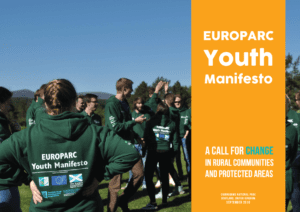
The EUROPARC Youth Manifesto is a source of ideas and inspiration for decision-makers in Protected Areas and rural communities to ensure the involvement and empowerment of young people.
In spring 2018 a group of youth from across seven countries gathered to create the EUROPARC Youth Manifesto. A document that shall draw the attention of Protected Areas, environmental organisations and rural communities to the challenges of their youth. An inspiration to meaningfully engage with young people in their area for tackling those challenges together.
We need your vote!
The Rural Inspiration Awards
The Rural Inspiration Awards recognise inspiring initiatives funded by the European Agricultural Fund for Rural Development (EAFRD) that demonstrate the contribution of rural development policy towards a more competitive, sustainable and inclusive rural Europe.
The Awards include five categories: improving the competitiveness of rural areas, environment and climate action, rural revitalisation, social inclusion, and LEADER. An expert jury will select one winner per category, and a sixth winner will be selected based on the results of this popular vote.
the EUROPARC Youth Manifesto was one of the25th selected projects, and is candidate for the popular vote.
Vote until 11 April at 12.00 (CET time) at https://www.surveymonkey.com/r/R3JDP7G
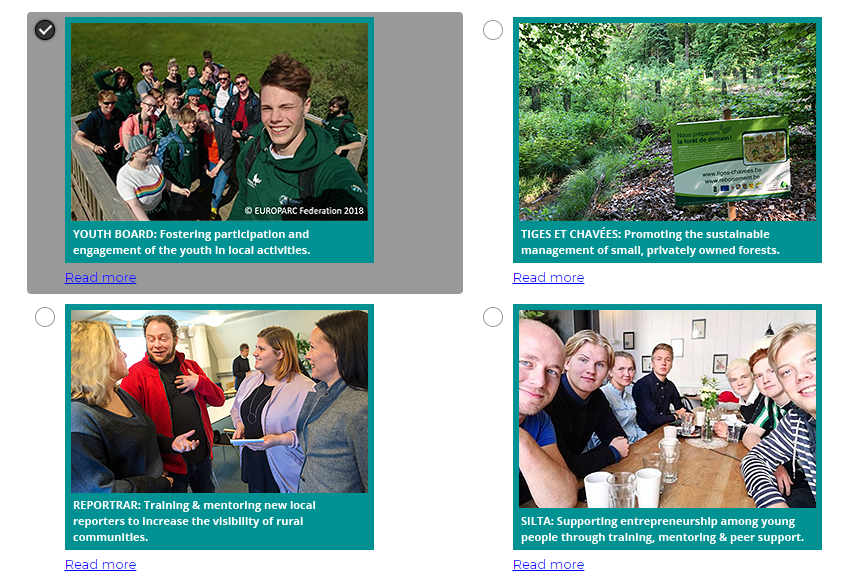
The Rural Inspiration Awards are an initiative of the ENRD (European Network for Rural Development).
How can sheep help us preventing fire? – a case study from Collserole Nature Park
IMPACT Interreg Europe project, an interregional cooperation initiative that aims to find innovative models for developing socio-economic activities in Protected Areas and in which EUROPARC is a partner institution, has been an opportunity to explore different approaches on how protected area managers face the challenge of nature conservation.
Within these examples, we have come to know some cases in which partnership agreements among park management authorities and local inhabitants have been reached, helping to achieve conservation goals while supporting the economic development of local communities.
Partnership agreement with farmers
One of this cases is the Promotion of eco-pasture, or controlled grazing, as a mean to maintain both remarkable natural habitats and open spaces for fire prevention in forest areas. This initiative was seen in Collserola Nature Park, Spain, where park managers support farmers to use sheep flocks for the clearance of fire protection fringes in order to reduce the costs derived of carrying out a mechanical clearance. This case study was published in EUROPARC Knowledge Hub, our organisation´s repository of good practices, videos and many other resources that is available in our website.
Following the collection of this case study, we had the chance to do a video-interview to one of the farmers involved in this agreement. In the following short video you will get to know J.A. Montoya, a sheep farmer who after carrying his activity in Collserola Nature Park for several years was contacted by the park authorities in order to put sheep at the service of the park.
However, this is just one example among many in which partnership agreements have allowed park management authorities to reduce nature conservation costs while supporting the development of their local communities. Other similar cases were also identified during the implementation of IMPACT project, as the organisation of a sheep transhumance in order to maintain remarkable natural environments in France. In this region, eco-grazing has allowed the recovery of a local breed, the Boulonnais sheep and, moreover, has allowed multiple farmers to generate revenue from their sheep breeding which contributes to the maintenance of their farms.
About IMPACT Interreg Europe project
To end with, it is worthy to remind us that nowadays, one of the problems that are nowadays affecting European population is the migration from rural areas to the cities, which led to the abandonment of rural communities. However, initiatives like IMPACT Interreg Europe project are a good example of how we use interregional cooperation to tackle problems of this kind.
For further updates and news, visit IMPACT Interreg Europe website or register to IMPACT newsletter.

